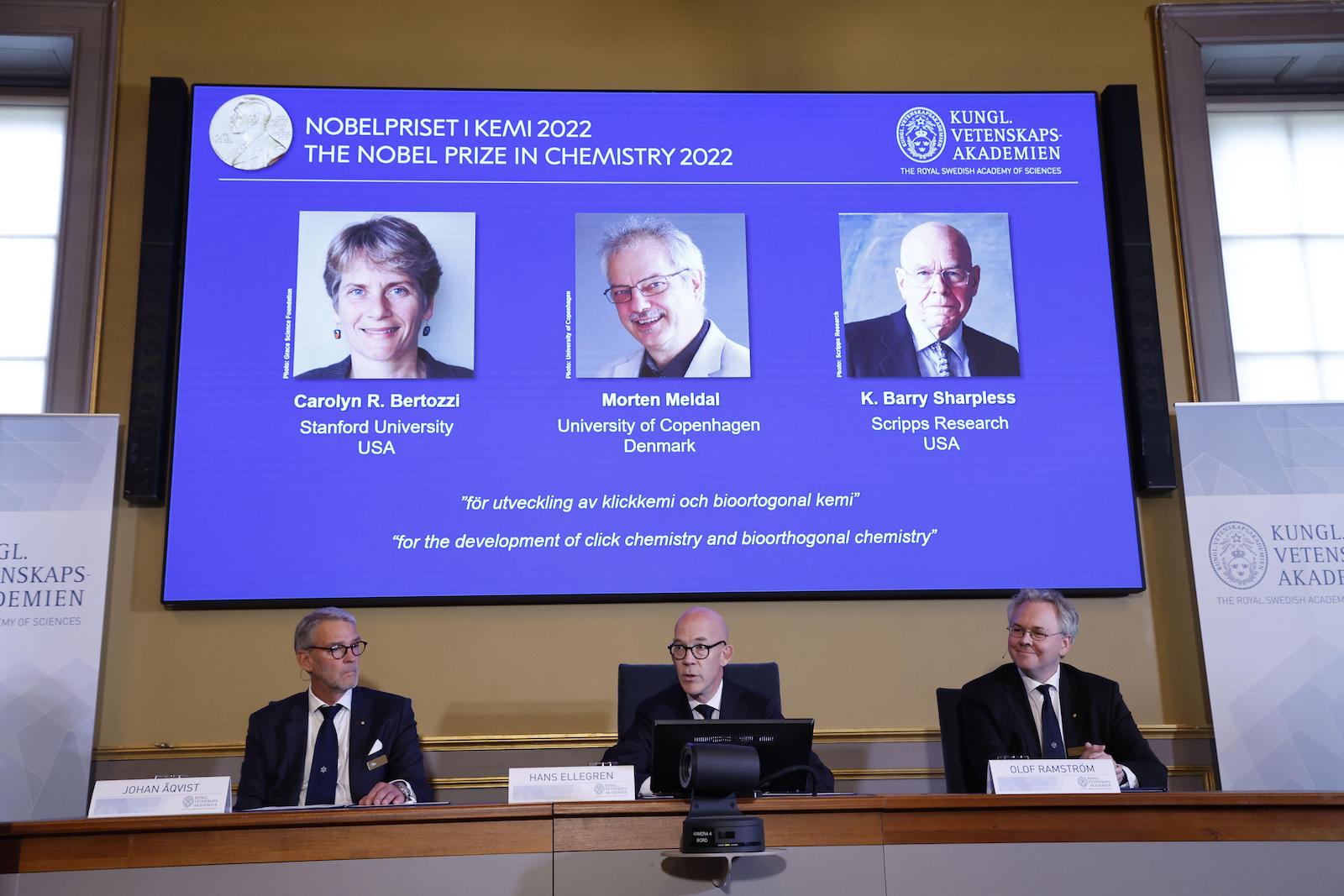‘Click' chemistry pioneers who engineered tiny chemical buckles awarded 2022 Nobel Prize
Their work has vital applications in studying diseases

The 2022 Nobel Prize in Chemistry has been given to a trio of scientists for the development of click chemistry and bio-orthogonal chemistry, which gives scientists the ability to snap molecules together using tiny chemical buckles.
Carolyn R. Bertozzi, Morten Meldal and K. Barry Sharpless will share the 10 million Swedish krona ($915,000) prize for the creation of functional molecules that "led to a revolution in how chemists think about linking molecules together," the Royal Swedish Academy of Sciences announced Tuesday (Oct. 5).
Theirs is the third Nobel given in 2022 after John F. Clauser, Alain Aspect, and Anton Zeilinger picked up the physics award for their pioneering work in quantum physics, while Svante Pääbo was rewarded for his work sequencing the Neanderthal genome.
"Click chemistry is almost like it sounds," Johan Aqvist, the chair of the Nobel Committee for Chemistry, said during the committee's announcement on Wednesday (Oct. 5). "It's all about snapping molecules together. Imagine that you could attach small chemical buckles to different types of building blocks. Then you could link these buckles together and produce molecules of greater complexity and variation."
Related: Scientists find a simple way to destroy 'forever chemicals' — by beheading them
The idea of click chemistry first came to Sharpless, a professor of chemistry at The Scripps Research Institute in California, and his colleagues in 2001 as a way to produce simple and quick reactions without unwanted byproducts. He and Meldal, a professor of Chemistry at University of Copenhagen in Denmark, went on to find the first perfect candidates in a reaction between the molecules azide and alkyne whencatalyzed by copper ions. The molecules snapped together with each other and nothing else, in a reaction that Olof Ramström, a member of the Nobel Committee, described as the "crown-jewel of click reactions."
"When this reaction was discovered, it was like opening the floodgates," Ramström said at a press conference following the announcement. "We were using it everywhere, to build everything."
Sign up for the Live Science daily newsletter now
Get the world’s most fascinating discoveries delivered straight to your inbox.
The reaction, now widely used, has been employed in developing vital pharmaceuticals, for sequencing DNA and for creating new materials.
Following on from Sharpless and Meldal's work, Carolyn Bertozzi, a professor of chemistry at Stanford University in California, found a way to create click reactions that didn't need a toxic copper catalyst. These enabled Bertozzi and her team to build click reactions inside living cells without disrupting their normal chemical processes.
The new cell-friendly ‘bioorthogona’" reactions enabled Bertozzi to stick fluorescent green tags on cell surfaces called glycans, which she traced to see how tumour glycans protect malignant cells from immune system responses. Bertozzi used this tracing procedure to produce insights that helped her develop new antibodies that could break down tumour glycans, leaving the tumours vulnerable to attack by immune cells. Her research has since been used to study multiple diseases inside complex living organisms, such as zebrafish, without the need to extract cells for study inside petri dishes.
"I'm absolutely stunned. I'm sitting here and can hardly breathe," Bertozzi said in response to the news of her award. "I'm still not entirely positive that it's real, but it's getting realer by the minute."

Ben Turner is a U.K. based staff writer at Live Science. He covers physics and astronomy, among other topics like tech and climate change. He graduated from University College London with a degree in particle physics before training as a journalist. When he's not writing, Ben enjoys reading literature, playing the guitar and embarrassing himself with chess.









